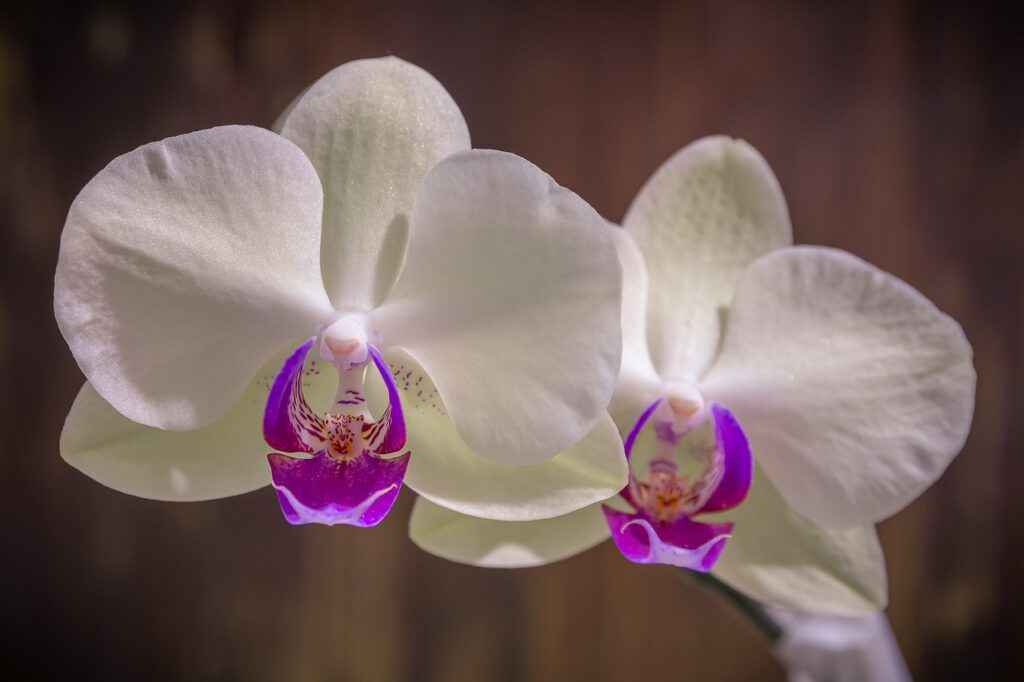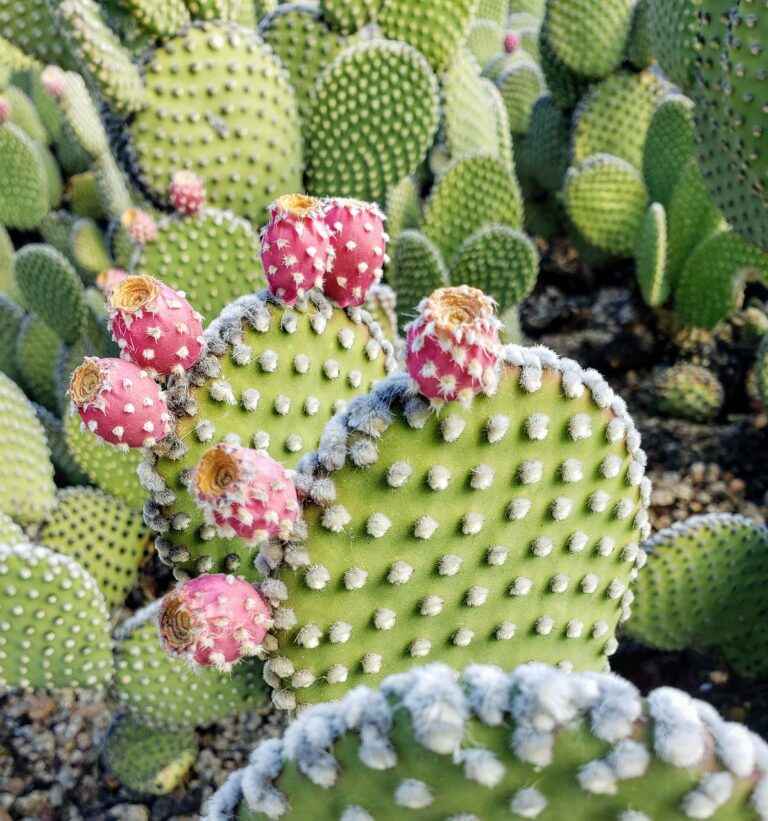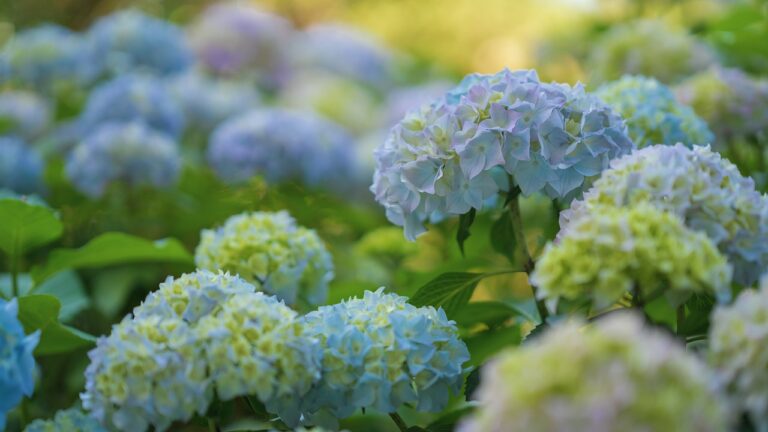Orchids – varieties, care, growing orchid at home
Orchids are one of the most beautiful flowering plants and very fashionable as pot flowers. Although so beautiful, it is nevertheless demanding and not easy to maintain at home. Therefore, it is worth finding out what the proper care looks like and choose the right varieties of orchids that you will be able to deal with. Here you will find 10 secrets of growing orchid at home, thanks to which your orchids will grow healthy and bloom beautifully!

Orchids grow in both hemispheres, both in temperate and equatorial zones. They are perennials. They include over 30,000. species. Those from the temperate zone root in the ground and can be grown as garden orchids, such as the Shoe (Cypripedium). On the other hand, those from the equatorial zone are epiphytes and decorate our homes.
People grow orchids for their beautiful and varied flowers. When making a purchase pay attention to flowers. It will be nasty surprise when your orchid sheds flower buds shortly after purchase and then other more serious problems begin with it.
You will blame yourself for these problems and find that orchids are not plants for you after all. However, you can easily avoid many problems if you notice other important factors before purchase, in addition to flowers. So – how to buy orchids?
1. How to buy orchids?
Currently, you can buy orchids at promotional prices in garden centers, supermarkets or other stores. Often succumbing to the charm of flowers and affordable price, you decide to buy an orchid.
I would like to warn you against such an ill-considered decision. Before you make a purchase, especially for the first orchid in your life, find out what species and varieties of orchids will feel good in your housing conditions and look for such species. Otherwise, growing orchid at home may fail.

If you manage to find the orchid you want, pay attention to the root system instead of admiring its flower. Do not buy orchids with withered or rotten roots. A certain amount of dry roots, e.g. in Phalaenopsis, is not a problem, but it is not always possible to correctly assess the number of healthy roots in the store.
Therefore, try to choose orchids that root system leaves no doubt. A healthy root system is the basis for a successful orchid cultivation!
Can you propagate orchid from leaf ?
Yes, you can buy an orchid for resuscitation, but leave that to more experienced growers. Check if the orchid is stable in the pot. Look at the leaves. These should be hard, without discoloration and mechanical damage.
If the orchid you are buying is in the process of blooming, check if the flowers are discolored. Make sure that, for example, in the case of Phalaenopsis, the plant has young leaves sprouting from the center and that the heart is not flooded and rot. Only buy plants that are well labeled.
Why is it so important to label the orchid variety? Because each type of orchid, and in some cases species within a genus, may require different growing conditions to flower. So if you don’t know which orchid you have, how will you provide it with optimal development conditions?
2. Varieties of orchids for home cultivation
Often, before buying the first orchid, we ask ourselves what variety of orchids to choose to be easy to grow. Some growers recommend Phalaenopsis to start with. In fact, it is generally available and reasonably priced. Others point to Dendrobium as being undemanding, while Vandas strongly advise amateurs against being difficult to grow.

My adventure with orchids started with Phalaenopsis, but unfortunately it was not a successful start. It turned out that Phalaenopsis is a demanding orchid, and errors in growing this orchid can only be seen when the plant is in an almost agonizing state. It was much easier and more fruitful for me with the reborn Vanda and today I would like to recommend it to beginner orchid lovers, despite the relatively high price.
One thing is for sure, before you buy, try to find out as much as possible about the orchid variety you are choosing. If you get to know your plant’s needs and follow certain cultivation rules, such as watering, lighting, temperature, fertilizing and transplanting, growing orchid at home will become interesting and easy for you. And when the orchid will repay you with long and abundant flowering for your care, you will be a very happy person 🙂
Believe me, growing orchid at home is not as difficult as popular opinion says and is not reserved for a narrow group of people. Below I will describe a few basic rules of orchid care at home, the observance of which will allow you to enjoy the good condition and abundant flowering of your orchids.
3. Watering orchids
Watering is a very important procedure in the care of orchids. For watering orchids use lukewarm (not cold!) water, preferably pre-boiled and left-over water. Water from a reverse osmosis filter can also be used. Such water does not harm the orchids.
However, the water must not be chemically softened. The water softening sodium is toxic to orchids. If someone uses bottled water to water their orchids, he should first find out how it has been softened. You can also use rainwater, but only where there is no air pollution.

Both watering and sprinkling the orchids are best done in the morning, so that they can dry by evening. In this way, you will avoid many diseases that attack orchids.
More convenient and safer than watering from above is the so-called “bathing” of orchids. For this purpose, use a bowl in which to fit several pots with a plant, pour water and put the orchids in for about 15 minutes, then take it out on the stand, and after a few minutes pour out the excess water from the stand.
The most common orchid cultivation failures are due to watering errors. Know that orchids can not stand excess water and are much better at overdrying than overwatering.
Therefore, it is worth knowing the rules explaining how to water an orchid. Here are some general rules, but remember that different species have different water needs and it’s good to know your plant’s needs. For now, however, let’s focus on these general rules that will suit most orchids in our apartments.
Water orchids more often when:
- they grow in baskets without a substrate – this is how they are sometimes grow, e.g. Vandas,
- Humidity around orchids is only 40% (e.g. during the heating season),
- The air temperature is 20 ° C and above, and the orchids are exposed to direct sunlight,
- There is an increased flow (circulation) of air around the orchids,
- Orchids have thin and slender leaves and shoots.
Water orchids less often when:
- It is cloudy for three consecutive days or more, and orchids are away from direct daylight,
- The temperature in the apartment drops below 20 ° C during the day
- Orchids grow in plastic pots,
- There is little air circulation around the orchids
- Air humidity around orchids is 70% or more
Important! Do not water the orchids until the substrate is dry after the previous watering.
4. How much sun do orchids need?
Proper care of orchids requires providing them with the right amount of daylight. Different types of orchids have different light requirements, depending on their origin and the conditions in which they live in nature.
Some of them are exposed to bright tropical sun rays, while others grow in deep shady forests. Therefore, it is worth checking what type of orchid you have and try to guarantee it a similar level of light as it has in nature.
How can you tell if your orchid does not have enough light?
For example, after dark green leaves turn dull. Each new leaf increment is less than that of the previous increment. The orchid does not bloom or has very few flowers and becomes limp.
When any of the following symptoms have occurred, it is best to move the orchid closer to the light source, e.g. to a window sill, sometimes it is enough to get rid of dense curtains, slide open blinds, remove objects that shade the orchids. And sometimes more drastically, get rid of outdoor plants that shade the windows.
Moving the orchid to a brighter place must be carried out carefully so that too much sunlight does not burn the plant. Therefore, gradually move the orchids closer to the light source over the course of a few days.
To illuminate the orchids, you can also use special lamps, which in the autumn and winter months, when the intensity of natural light is low, should shine for about 14-16 hours a day.
How to judge that your orchid has too much light?
With too much sunlight, the leaves of the orchids may get burned. The leaves become rough and warm to the touch, while it should be cool. Some orchids have a whitening of their leaves, others have a reddish color. The growth cone dwarfs and the next leaves turn yellow.

Of course, there are some species of orchids where red discoloration is natural when exposed to a lot of light, but they are alpine orchids that naturally have a cold environment under high light. However, at home, red discoloration should worry us.
I know that it is difficult to judge the highest appropriate amount of light at home. I once read that for orchids, the most tolerable amount of light is what the human eye can tolerate. Whether it is true I do not know, but I am applying this principle myself successfully.
Higher light intensity is good as long as the plant feels comfortable in it. The internal heating is worse than the external heating of the plant, which will undoubtedly occur if the orchid is exposed to long-term solar radiation or the use of inappropriate fluorescent lamps. Such a condition will lead to the inevitable death of the orchid.
If you notice any of the above-mentioned symptoms in your orchid, you should move it to a place not directly exposed to the sun. Place the plants on window sills with windows facing east. If you do not have such a possibility, it is enough to separate the flowerbed with orchids from the window, e.g. with a thick net curtain, or use blinds.
5. Orchid growing temperature
The heat demand also differs from one orchid variety to another. Each type and species of orchids has its own heat demand. Every orchid owner should know the needs of their charges in this area.
Unfortunately, many orchid species, such as Phalaenopsis, Paphiopedilum, and Dendrobium, will not produce flowers if they do not pass their dormant period in a cooler room. The length of the dormant period depends on the orchid species, in any case the minimum time is 2 to 3 weeks.
Often the night temperature needs to be lowered to 14-16 ° C. I achieve this temperature by placing orchids on a cold window sill near the glass, where the temperature is much lower than in the entire room. Additionally, you can make a special screen that separates the window sill from the rest of the room. This method is also great, especially when there is a heater under the window sill.

However, remember that the orchid should not touch the window pane. Thanks to this method, you do not have to allocate a special room for orchids.
The most important thing is to know the needs of our orchids, because, for example, the temperature at night below 13 ° C for Phalaenopsis grown willingly at home is too low and can seriously harm the plant. You should not place orchids with a window open in winter.
How to recognize that our orchid is frozen? Even after the leaves turn dark to black and become watery and soft. Orchid leaves that touch the glass that freezes over can have such symptoms.
Also, overheating the plant is as harmful as overcooling it too much. If the temperature is too high, the orchid leaves turn yellow or the tips of the leaves turn brown. The leaves fall down and the plant stops growing.

After observing such symptoms, it is good to lower the ambient temperature, in winter by reducing heating in house, and in summer take your orchids into the garden by placing them in the shade of trees. Sometimes it is enough to limit the direct access of light, which is also a heat source.
Orchid species that prefer lower temperatures are: Cymbidium, Masdevallia, Miltonia, Ondontoglossum, Oncidium, Paphiopedilum. The maximum temperature for these species during the day is 27 ° C, the minimum at night is 10 ° C.
Oncidium, Cattleya, Dendrobium, Laelia, Paphiopedilum with mosaic leaves feel good at medium temperatures. The maximum temperature for these species during the day must not exceed 30 ° C, and at night it should not fall below 13 ° C.
Higher temperatures, reaching a maximum of 32 ° C during the day and not falling below 15 ° C at night, are preferred by: Phalaenopsis and Vanda.
These are only examples, because here too there are exceptions to generally accepted rules and e.g. hybrids derived from crosses of various types can grow well in any temperature range.
6. Fertilizing orchids
Orchid experts adhere to the principle of “weakly, every week”. Where did it come from? Well, most orchids grow in nature on trees, receiving their nutrients very diluted with rain. Hence, it is better to use highly diluted fertilizer one day a week during the period of strong plant growth.
You can find many types of fertilizers for orchids on the market, their dosage varies: from 1/4 to 1/2 teaspoon per liter of water. It is important to follow the instructions recommended by the manufacturer. Remember – better less than more. I personally use an orchid fertilizer every two weeks. It is important to understand the needs of our orchids, as some orchids need a dormant period at a time while others need fertilization.
7. Air humidity and sprinkling of orchids
Depending on the species, orchids prefer an air humidity of 40% to 70%. Ambient humidity reduces evaporation from the leaves. It is not necessary to keep the humidity constant, and even to keep our orchids in good condition, it is sometimes good to lower the humidity even to 40%. And nothing will happen if the air humidity fluctuates between 90% – 100% for a short time.

However, if humidity remains at this level for a long time, especially with a drop in temperature, it can lead to excessive condensation and deposition on orchid leaves, which can cause rot and mold formation. A hygrometer can be used to correctly determine the humidity level.
If you have dry air in the room with orchids, you can buy one of the air humidifiers available on the market. In stores you can find various types of humidifiers and at different prices.
However, if you only have a few orchids, or you don’t want to expose yourself to additional costs, you can use simple home remedies to moisten the air around the orchids.
One of them is, for example, hanging wet towels over a radiator. A more effective way: sprinkle expanded clay on the tray and pour water slightly below the surface of the expanded clay.
Place pots with orchids on the prepared trays. Important: the roots must not touch the water.
The problem of excessive humidity in houses does not occur, so you have nothing to fear from this side.
8. What air for orchids?
Orchids need fresh air. They do not like nicotine smoke, they react badly to the ethylene content in the air, so avoid placing orchids, baskets or platters with fruit, especially apples, nearby. Also, cooking on a gas cooker, using sprays, release of compounds from paints, floor panels, plastics can also be harmful to orchids.
Therefore, it is good to regularly ventilate the room where our orchids are located. Just be careful when airing, that too strong a stream of cold air does not envelop the orchids, as this may lead to the dropping of flower buds. If ventilation is not possible, a fan can be used to improve air circulation.
9. Transplanting orchids
Orchids do not like to be replanted too often. It is enough to do this on average every 2-3 years. And they certainly do not like too large pots, in which the root ball dries too slowly. There are also exceptions in this case, for example, some Paphiopedilum or Miltonie like to be replanted every year, but here, as in previous cases, you need to know the needs of your plants more precisely.
However, in most cases wait for new growths to grow far beyond the edge of the pot, or for the substrate in which the orchids are growing to be decomposed and become uniform and soft, making it difficult for air to circulate around the roots. Orchids should also be transplanted when the substrate is excessively salty and even rinsing under running water does not give any results.
For transplanting, it is best to use special orchid substrates, most often based on tree bark. You can get such a substrate in a garden store without any problems. You can also prepare such a substrate yourself, but you need to have some knowledge and experience here.

Transplant to a slightly larger pot, because I will emphasize it again, most orchids grow in small pots. Do not replant orchids at “whatever” time, according to your own “I can see it”. Here, too, you must learn about the specific needs of your orchids. For example, transplant Paphiopedilum in winter after it has finished flowering, and Miltonia and Odontioda prefer autumn replanting.
On this occasion, I will mention orchids grown without soil in baskets. Such such plants cannot grow in the substrate because it is harmful to them. Nothing could be more wrong. Vanda orchids can also grow in the ground.
You can easily prepare such a substrate by using a mixture prepared in equal proportions of hazelnut shells (you cannot use walnut shells because they contain tannin that is harmful to orchids), peanut shells, polystyrene and charcoal.
Plant Vandas in the prepared substrate by tapping the pot to better spread the substrate and stabilize the plant. Never knead the ground. Before planting, you need to remove all damaged roots and spray with a fungicide. After planting, do not water the plant for about 14 days to give it time to acclimatize to the new conditions.
10. Mycorrhiza in the life of orchids
Most orchids in nature live in close symbiosis with mycorrhizal fungi. The fungi break down the organic substances in the substrate, thus releasing the minerals needed by plants for proper development. All orchids in nature need mushrooms to propagate from seeds. Orchids that grow at home don’t have the support that would mushrooms give. You can often hear voices that the use of mycorrhiza is a new fashion.

Perhaps it was also the fashion that caused a greater interest in mycorrhiza, it is important that thanks to the use of mycelium our orchids will gain greater resistance to root pathogens, less sensitivity to environmental stresses, better water supply, greater ability to absorb nutrients, including those difficult to digest, such as phosphorus, more abundant flowering and overall better condition. Thanks to the use of mycorrhiza, growing orchid at home will become much easier.
I strongly encourage you to become interested in this interesting group of plants. Orchids are extremely hardy plants. Sometimes it seems that you have made so many cultivation mistakes, that the orchid is in such a state, that you cannot save it.
While in the case of other plants, it is easy for us to decide to throw the plant in the trash. In case of orchids, do not make such a decision hastily.
You can always get rid of the plant, but before doing so, try to revive the orchid. Sometimes, it is enough to help the plant a little so that it rises like “Phoenix from the ashes”. Orchids have an incredible strength to fight for their existence, unknown to me in other plants. I hope these few tips will dispel your concerns and make you decide to buy an orchid without fear.
Which orchids are fragrant?
Of course, some orchids are so fragrant that their fragrance fills the room. Smells is similar to raspberry, coconut or citrus. In this way, the orchid encourages insects to pollinate. Odorless orchids attract insects with their shape and color.
The fragrant orchids that I had the opportunity to meet are: Phalaenopsis Liodoro, Phalaenopsis Bellina, Phalaenopsis Violacea.







